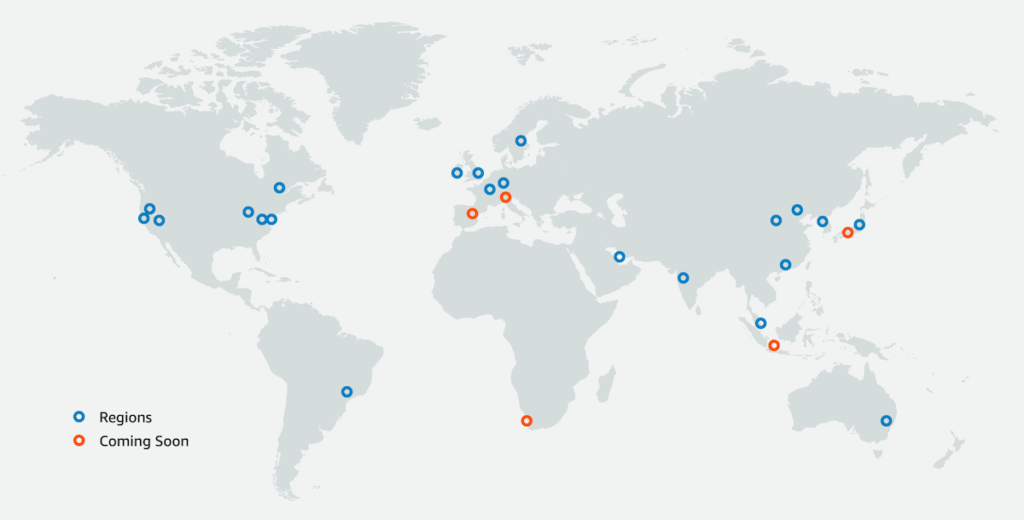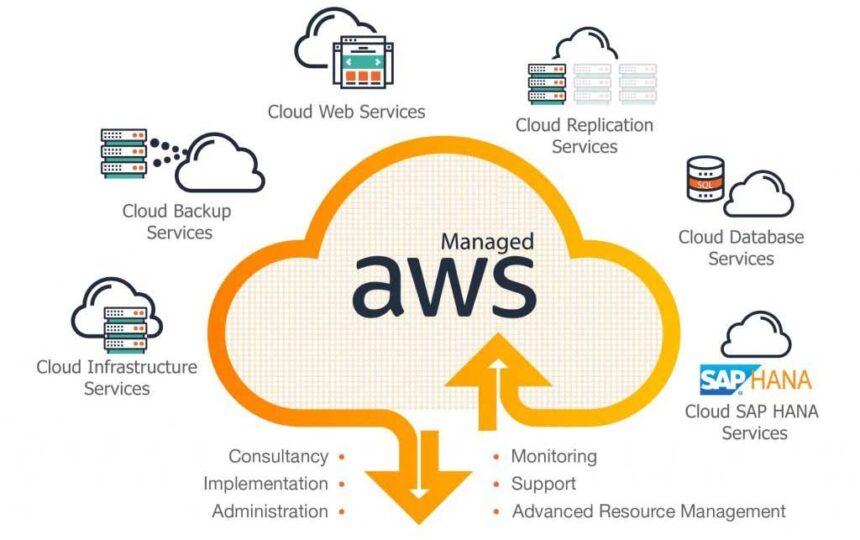The Cloud’s Hidden Machinery
Every app, feed, and stream connects through invisible highways built by Amazon Web Services (AWS). Few users understand its depth, yet its reach touches nearly everything online. AWS acts as the world’s digital engine — serving millions of organizations, governments, and daily interactions across continents.
A sudden outage reminds users of its reach. When AWS falters, transactions stall, systems freeze, and communication stops. The platform stands as the central hub for modern digital life. Its infrastructure shapes commerce, media, and technology at every scale.
What’s Happening & Why This Matters
The AWS Architecture

AWS operates as a global network of interconnected computing systems. The platform divides into regions, availability zones, and edge locations. Each region serves as a physical cluster of data facilities. Each zone runs isolated resources to maintain uptime. Edge sites manage local performance. This layered structure forms a resilient web that supports the digital economy.
The system connects through over 6M kilometers (3.728M miles) of private fiber lines. The connections link 38 global regions with high-speed capacity. That distance equals looping the planet more than one hundred times. Each facility uses redundant power systems, cooling units, and real-time monitoring to maintain service integrity.
AWS generated $107 billion in yearly revenue in 2024. It holds over 37% of the global cloud market, surpassing Microsoft Azure and Google Cloud combined. Its customer list spans governments, financial institutions, health systems, and entertainment giants. The network supports over four million organizations.
Its reach defines AWS as more than a vendor. It operates as the digital world’s infrastructure backbone.
The Services Behind Everything Online
Every click on a screen connects to an AWS service. There are over 240 fully featured AWS services that cover a wide range of technologies for computing, storage, databases, networking, analytics, machine learning, and more. The most visible components include:
- EC2 (Elastic Compute Cloud) runs the processing muscle behind most websites and mobile platforms.
- S3 (Simple Storage Service) stores endless data sets — photos, documents, databases, video archives.
- DynamoDB manages large-scale app data with millisecond access speeds.
- Lambda executes code instantly without a traditional server.
- Route 53 handles web address routing that keeps domains reachable.
Each service performs independently yet synchronizes with others. That modular approach defines AWS efficiency. Engineers create a universe of interlinked systems that balance computation, storage, and networking.
Apps such as Netflix, Spotify, Airbnb, NASA, and Zoom depend on these frameworks daily. When users upload, stream, or process content, AWS executes those requests silently across thousands of servers.
When the Engine Stalls
An outage exposes the world’s reliance on AWS. During a recent disruption, the US-East-1 region — one of its oldest and most active hubs — experienced downtime. Services like Slack, Snapchat, Coinbase, and Alexa stopped functioning. Businesses lost revenue. Governments paused digital operations.
Analysis traced the event to network routing errors inside Route 53 and DynamoDB. The issue blocked traffic distribution. Once the chain broke, global services failed to communicate. The incident lasted hours, enough to ripple through commerce and media worldwide.
Down Detector reported thousands of error alerts within minutes. The failure cascaded across continents. Users in Europe, Asia, and North America experienced disruption simultaneously.
Dr. Corinne Cath-Speth, senior researcher at ARTICLE 19, described the event as “a reality check for digital dependency.” She argued that such outages prove the fragility of centralized cloud power.
Dependence Without Redundancy
AWS’s dominance stems from its simplicity. Businesses rent computing power instead of building local hardware. The model reduces cost and increases flexibility. Yet that same convenience breeds risk. Centralized systems create single points of failure.
Other providers — Azure at 22% market share and Google Cloud at 10% — cannot replace AWS’s global scale. Even combined, they lack its infrastructure footprint. That gap keeps industries tethered to Amazon’s servers.
Once a company integrates AWS services, exiting becomes complex. Data migration requires enormous cost and labor. This creates inertia. Even during outages, customers remain within the ecosystem.
Behind the Curtain: How AWS Operates
Inside AWS data centers, thousands of engineers oversee constant system checks. The facilities function with strict automation protocols. AI-driven sensors track heat, energy flow, and bandwidth traffic. Predictive algorithms forecast hardware degradation before failures occur.

Security defines another cornerstone. AWS processes over 1 trillion data events per day, each monitored through automated intrusion detection. Firewalls isolate workloads. Encryption layers protect client information. These measures maintain trust across sectors that depend on AWS for financial, health, and governmental operations.
Amazon’s Chief Technology Officer, Dr. Werner Vogels, once described AWS as “the connective tissue of the internet.” The description fits. The company runs the invisible power source that enables nearly every digital interaction on Earth.
Global Scale, Global Consequence
Every sector depends on AWS infrastructure. Hospitals manage patient records on its servers. Banks run transactions through its compute clusters. Airlines store scheduling systems within its architecture. Even social networks process messages through its virtual machines.
The outage triggered questions around sovereignty and independence. Governments now discuss strategies for multi-cloud diversification. Distributed hosting reduces reliance on one platform. Regional redundancy and private infrastructure lessen risk.

Cybersecurity specialists emphasize transparency. Users deserve insight into data handling, backup routines, and recovery plans. Without these safeguards, outages translate to economic losses and security vulnerabilities.
TF Summary: What’s Next
AWS is the cornerstone of digital infrastructure. Its architecture defines modern computing. Yet dependency on one provider invites systemic fragility. Every outage exposes how deeply the world ties its existence to a single network.
MY FORECAST: Governments and enterprises begin investing in multi-cloud frameworks and edge autonomy. Decentralization becomes strategy rather than theory. The cloud industry enters a phase defined by redundancy, transparency, and resilience — principles AWS itself helped pioneer.
— Text-to-Speech (TTS) provided by gspeech
More AWS Services and their functionalities:
- Compute: Includes services like Amazon Elastic Compute Cloud (EC2) for virtual servers and AWS Lambda for serverless functions.
- Storage: Features object storage with Amazon S3, block storage with Amazon EBS, and low-cost archiving with Amazon S3 Glacier.
- Database: Offers managed relational databases (Amazon RDS), NoSQL databases (Amazon DynamoDB), and data warehousing (Amazon Redshift).
- Networking and Content Delivery: Manages your virtual network with Amazon Virtual Private Cloud (VPC) and delivers content globally with Amazon CloudFront.
- Machine Learning (ML) and Artificial Intelligence (AI): Provides services such as Amazon SageMaker for building and deploying ML models and Amazon Rekognition for image and video analysis.
- Analytics: Includes tools like Amazon EMR for big data processing and Amazon Kinesis for real-time data streaming.
- Security, Identity, and Compliance: Covers user access management (IAM), threat detection (Amazon GuardDuty), and DDoS protection (AWS Shield).
- Application Integration: Allows communication between different services with tools like Amazon SQS (Simple Queue Service).
- Management and Governance: Helps with monitoring and managing your cloud environment through services like Amazon CloudWatch.


